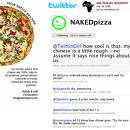 I’ve said this before, and I’ll say it again: Most marketing is bad. Awful, actually. When the creative is good, it’s often poorly targeted; when the targeting is dead on, the creative usually sucks. And more often than you’d think, the creative and the targeting aren’t what they should be.
I’ve said this before, and I’ll say it again: Most marketing is bad. Awful, actually. When the creative is good, it’s often poorly targeted; when the targeting is dead on, the creative usually sucks. And more often than you’d think, the creative and the targeting aren’t what they should be.
Here’s one example: Six Flags’s revived campaign for its theme parks, featuring “Mr. Six,” whom Time calls a “creepy dancing old guy.” And that’s not the only insult Time and its sources hurl at Mr. Six:
“[H]is troll-like antics may prevent you from ever setting foot in a Six Flags park,” Time writer Sean Gregory says.
“It's a pretty miserable piece of advertising,” says Barbara Lippert, a critic for Adweek, the trade publication. “It's as dumb as can be, and talks down to us. He's like an Elmer Fudd who never made it out into the country.”
So what’s the root of evil campaigns like this one? Why does bad marketing happen? There are a lot of reasons, but in honor of Mr. Six and his favorite theme park, here are Six Red Flags to avoid:
• Too many decision-makers. Marketing designed to please everyone in the boardroom usually pleases no one in the audience. If you find yourself making concessions that ensure your campaign flies, it’s time to make a difficult decision. Either risk making someone unhappy, or start over.
• Not focused on the right audience. Who is Six Flags’s audience? Teens and tweens, right? Now, does Mr. Six look like a character who resonates with teens and tweens? Take a look at his Twitter bio. Do most teens and tweens even know who Fred Astaire is?
• No clear branding strategy. If a company cannot concisely and quickly say how they are differentiated, it’s going to be hard to develop a 30-second message that tells the audience why they should care.
• Too much navel gazing. Comments like this one from a Six Flags exec are a good reminder that your audience doesn’t think about your brand nearly as much as you do: "We had a lot of internal conversations about Mr. Six, and we were like, look, he's beloved by our guests," says Vieira Barocas. "There are definitely people who are not fans of him. But he has more fans than not. And at a time when there's all sorts of uncertainty, people like the familiar and the known." Remember: “familiar and known” to you does NOT necessarily equal “familiar and known” to your audience.
• Doing what you’ve always done. Change is hard. It’s clear that one of the main reasons why Mr. Six was revived is that bringing him back seemed easier than starting over. Easier, yes; but better? Not so much.
• Not knowing what else to do. Six Flags is in trouble—they filed for bankruptcy protection in June, as Time notes—and Mr. Six seems like an act of desperation. Would the company have been better served by some market research? Might have their money been better spent on rebranding its theme parks? Probably. But the unfortunate, common rule of thumb is, “when you don’t know what to do, throw more money at the ad budget.”
There’s good news in all of this. Avoid these marketing red flags, and your campaign will stand out. It’s not easy, but it’s worth the extra effort.
-
Anthony J.
 For a lot of organizations, the leap into social media begins (and often ends) with this sentence: “We need a Facebook page!” If you hear that said by a colleague—and especially if you say it yourself—take a step back and carefully consider your options. While Facebook’s 300 million members might make you think you have to be there, it’s by no means your only choice. And it may be a waste of time.
For a lot of organizations, the leap into social media begins (and often ends) with this sentence: “We need a Facebook page!” If you hear that said by a colleague—and especially if you say it yourself—take a step back and carefully consider your options. While Facebook’s 300 million members might make you think you have to be there, it’s by no means your only choice. And it may be a waste of time.




























